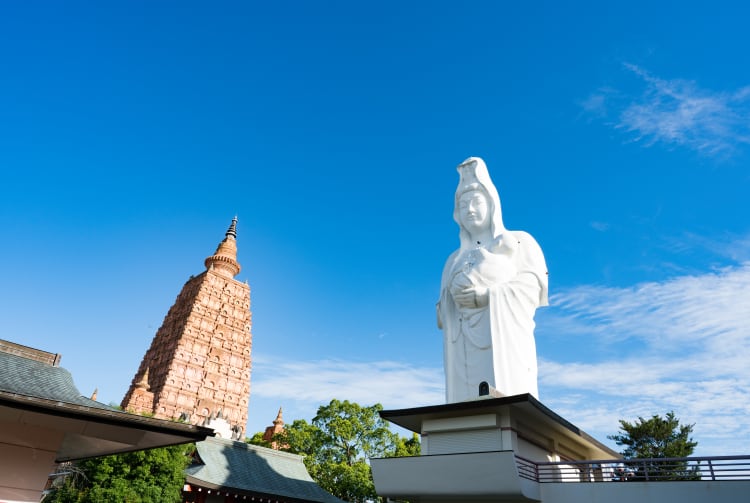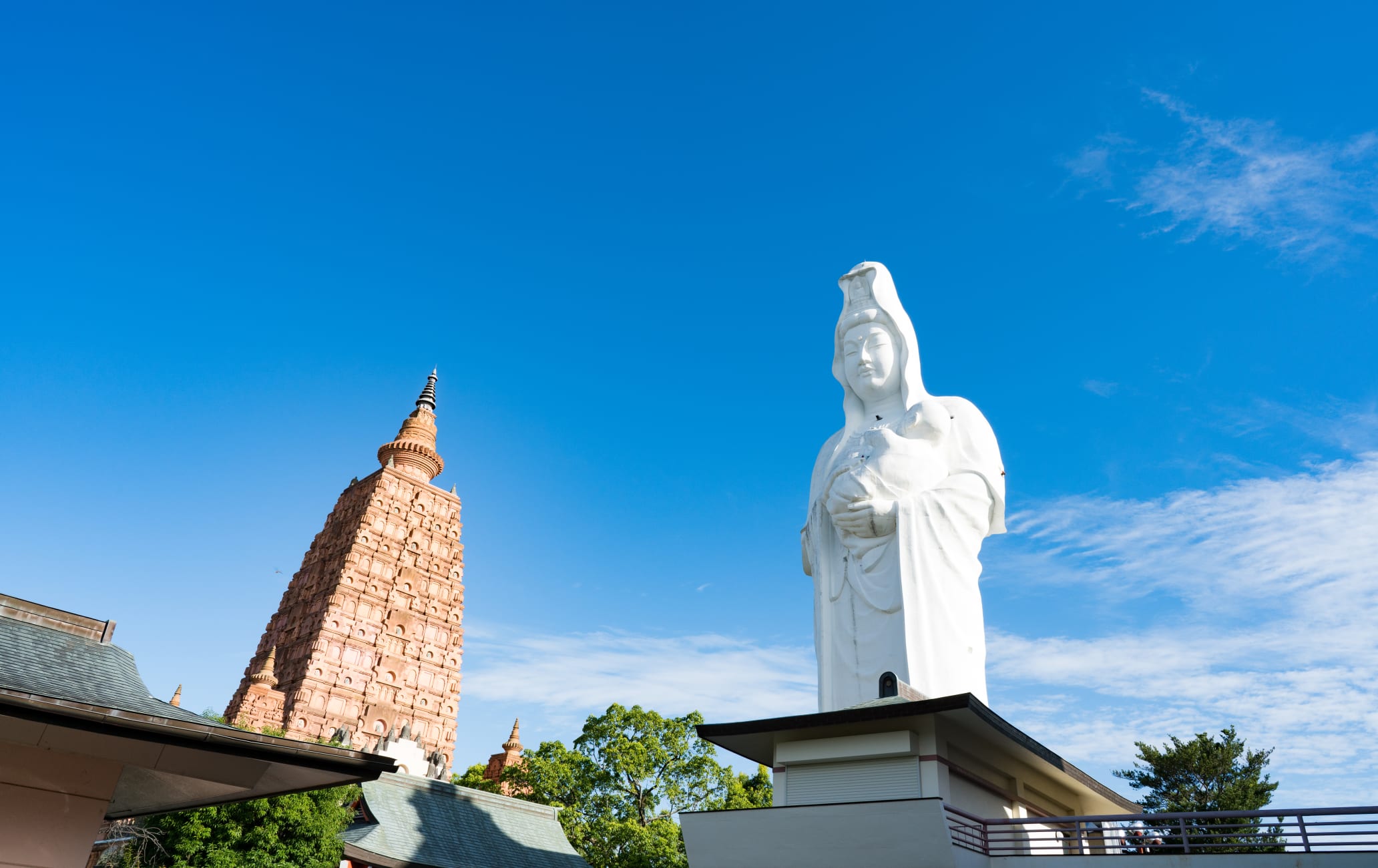Historical shrines and temples, vivid azaleas, and local crafts
Kurume is a city in the southwest of Fukuoka Prefecture , built on the banks of the Chikugo River. It is a former castle town surrounded by the Minou Mountain Range. There are many notable temples and shrines in Kurume including Suitengu Shrine, Bairinji Temple , and Daihonzan Naritasan Kurume Temple . Several Japanese crafts are also local to the area, including Kurume kasuri textiles and Rantai indigo lacquerware.
Don't Miss
- Daihonzan Naritasan: The temple's 62-meter statue of the Mother Kannon, the bodhisattva of mercy, can be seen for miles around
- Food and drink: Kurume boasts one of the largest number of sake breweries in Japan, and is known as one of the three great sake brewing areas. There's also yakitori and tonkotsu ramen to enjoy.
- Azaleas: The azalea is Kurume city's symbolic flower and blooms in abundance from around mid-April
How to Get There
Kurume is easily accessible by air from Tokyo, and a flight takes about three hours. It is only about 17 minutes by bullet train from Fukuoka City , about 35 minutes by the local JR Line, and about 30 minutes by the Nishitetsu Line.
Shrines and temples
There are many notable shrines and temples in Kurume. At Suiten-gu Shrine, visitors pray to the God of Water and Easy Childbirth, while many visit Bairin-ji Temple for its collection of plum trees and its particularly ascetic form of Zen meditation.
Just outside Kurume City is Daihonzan Naritasan Kurume Temple 's main feature is a 62-meter statue of the Mother Kannon, the bodhisattva of mercy, which can be seen from afar and is a useful landmark on the train ride from Fukuoka to Kurume. Inside the statue is a spiral staircase which allows you to climb to the top. Windows open to provide a view across southern Fukuoka Prefecture .
Azaleas everywhere
The Kurume azalea is the flower of the city and is adored by residents and visitors alike. The flowers bloom from mid-April to early May, and they can be seen in abundance throughout the city. Particularly good places to see the blooms include Kurume Forest Azalea Park and the Kurume World Tsutsuji Center.
Homegrown art
Kurume City has produced excellent artists, including Shigeru Aoki, Hanjiro Sakamoto, and Harue Koga. A fine collection of modern Japanese art can be seen at the Kurume City Art Museum.
Local crafts
Kurume is known for Kurume kasuri, an indigo-dyed cotton fabric that has been designated a National Important Intangible Asset and a National Traditional Craft Product. Kurume kasuri originated in the latter part of the 18th century, and some local shops still make the fabric using traditional methods, a process which involves months of labor. It has also been used to make sundries and sneakers recently, and is popular for everyday use items and souvenirs.
Rantai lacquerware is another traditional craft of Kurume. This traditional bamboo ware is made from locally grown bamboo that is split and woven and then repeatedly coated with lacquer. Lightweight and sturdy, the more it is used the more flavor it takes on, making it a favorite for daily use items such as chopsticks or confectionary utensils.
Food and drink
Tonkotsu ramen, with pork bone broth, originated in Kurume, and is one of Fukuoka 's most popular delicacies.
It is also one of the areas with the most Yakitori restaurants in Japan. In addition to chicken, grilled skewers of beef and pork can also be enjoyed. The scent of fresh-grilled skewers wafts through the city, and is sure to work up an appetite.
In the Jojima area sake brewing has long flourished, thanks to an abundance of water and high-quality rice. Kurume boasts one of the largest number of sake breweries in Japan, and offers a wide variety of sake.


























































